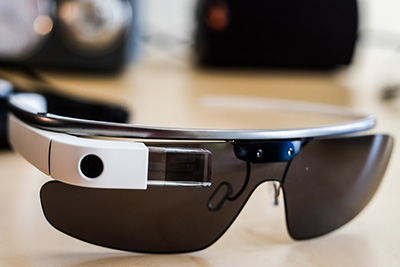Editor's note: This item originally ran on the website of Modern Materials Handling, LM's sister publication, last week.
It’s Day Two at the Material Handling & Logistics Conference in Park City, Utah, an event I have been attending for close to 15 years (and, full disclosure, I was a member of the planning committee).
My morning began with two conversations, one with Harry Moser, the founder and president of the Reshoring Initiative, and another with a supply chain executive from a leading retailer. I then had a chance to sit in on a presentation by Adrian Kumar, a vice president of solutions design for DHL, and one of his colleagues on DHL’s work with NextGen Supply Chain technologies, including mobile robots and Google Glass. They seem disparate, but there’s a common thread between the three.
If you haven’t heard Harry speak at a conference, he is an apostle for American manufacturing in the best possible way. Founded about 6 years ago, the Reshoring Initiative says that it “is the leading voice in making the case to companies that it is often in their interest to bring manufacturing jobs back to the United States or keep existing jobs here.” The news this year: For the first time since I’ve been talking to Harry, the number of announcements for re-shored jobs, which includes investments in manufacturing in the U.S. by foreign owned companies – or foreign direct investment – exceeds the number of jobs going off-shore.
While that’s good news for American manufacturing, one of the persistent questions is whether there are enough individuals with the right skills to fill those positions, which is a persistent theme at every conference I attend. That is especially true in our industry as heightened customer expectations mean that all of us have to take orders later in the day and still get them on the back of a truck to meet order cut-off times. That takes either more labor, or automation. And, that was the conversation I had this morning with one brand name retailer. Those two confluences – rising customer expectations and lack of labor – means that his company is investigating automated goods-to-person picking technologies. There’s just no avoiding it.
All of that came together in the presentation of what we’re calling NextGen Supply Chain technologies by DHL. Now, I’ve been talking to solution providers about Google Glasses and other competing vision picking systems and robotic picking solutions for the last couple of years. Indeed, in the recent issue of Supply Chain Management Review, I ran an article about Rochester Drug’s mobile piece picking robotic solution in Supply Chain Management Review– I’ll be publishing a fuller version in the October issue of Modern Materials Handling. Most of that talk has been speculative about what we’ll be able to do in the future.
The DHL presentation suggests that the NextGen Supply Chain is closer than I may think. They highlighted two solutions.
In one, a pick-to-cart process is enabled by ring scanning, vision picking with glasses from Google and Vuzix and a “leave me” mobile robotic picking process using robots from Locus.
In the first, an associate receives picking instructions that include a storage location, an item identifier, the quantity to be picked and the bin locations for putaway on the cart on the vision picking devices. The associate confirms the pick location with the ring scanner, which is hands free; picks the required items to the right bins on the cart; and confirms the pick using voice. Voice can also be used to communicate with the system if there is a change in the order; the ring scanner can be used to capture other information, like lot identification, if required by a customer. There has been a 7 to 12% increase in productivity from traditional pick to cart processes, along with improved accuracy and significantly improved training time.
The second was the mobile robotic picking solution, which is designed to reduce non-value-added travel from a zone pick operation. In this application, the Locus robot receives picking instructions from a WMS and travels to a pick location. The associate sees picking instructions, including the item to be picked, the picking location and the quantity, on an iPad screen. Once the associate scans the item using a scanner under the iPad screen and drops the item in the tote, the robot travels to the next pick location. Once all the items have been picked, it travels to a packing station and gets the next tote. So far, DHL says it is realizing a 23% reduction in travel distance and a 46% reduction in travel time.
DHL is not stopping there. While yet to go into pilot, it is also looking at a mobile piece-picking solution and a solution where the robot follows a picker through a pick zone.
There are still questions to be answered. DHL had to add an extra battery to the vision system to get a full shift and are having physicians monitor associates since no one has used these devices for this kind of operation over time. But both suggest that on display here at the MH&LC are closer than we think.
About the Author
Follow Robotics 24/7 on Linkedin
About the Author
Follow Robotics 24/7 on Linkedin
About the Author
Follow Robotics 24/7 on Linkedin
Article topics
Email Sign Up
















